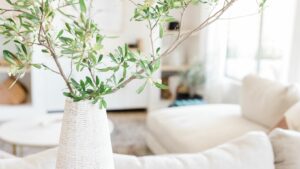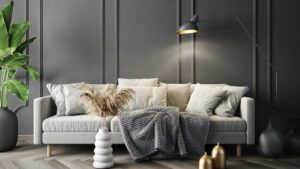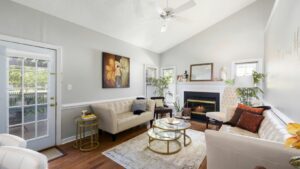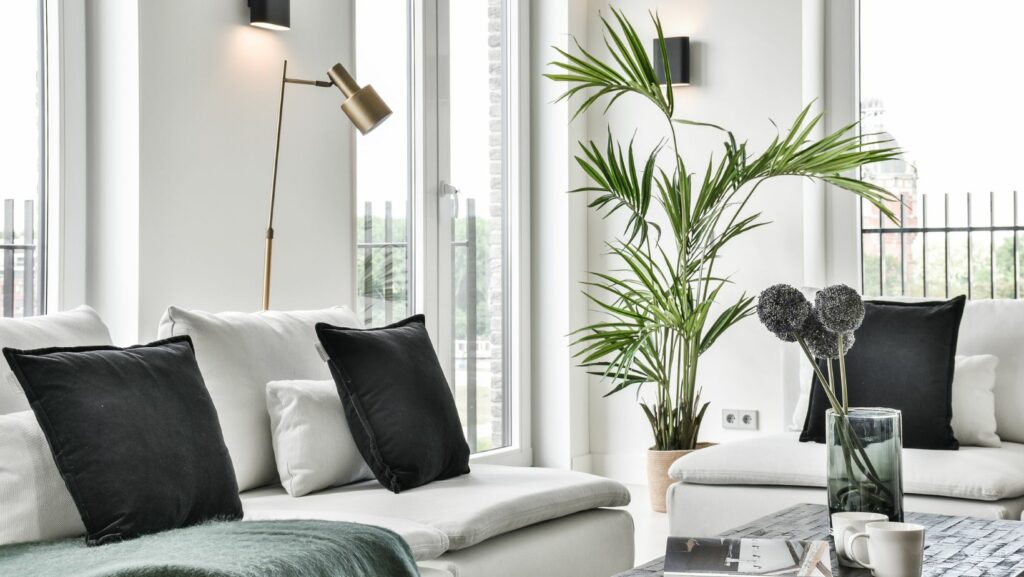In the heart of every home, the living room serves as a sanctuary for relaxation and social gatherings, making its design a crucial aspect of daily life. Organic interior design, with its emphasis on natural elements and sustainability, offers a refreshing approach to creating a serene and inviting space. This style not only enhances the aesthetic appeal of a living room but also promotes a healthier environment, aligning well with modern eco-conscious trends.
As homeowners increasingly lean towards eco-friendly living, organic interior design becomes a compelling choice. It integrates materials like wood, bamboo, and natural fibers, which are not only sustainable but also add warmth and texture to the living space. Additionally, the use of non-toxic paints and plant life contributes to improved air quality, making the living room a true retreat from the hustle and bustle of daily life.
By embracing organic interior design, one can achieve a living room that’s not only stylish and contemporary but also beneficial to both mental and physical well-being. This approach offers a unique blend of comfort, sustainability, and beauty, making it an ideal choice for today’s homes.
Living Room Organic Interior Design
What Is Organic Interior Design?
 Organic interior design focuses on integrating natural elements and eco-friendly materials into the living space. This design philosophy utilizes resources like wood, bamboo, and natural fibers, which are not only sustainable but also help in creating a more breathable and healthy environment. Organic design often incorporates non-toxic paints and emphasizes the presence of plant life, enhancing the room’s air quality and aesthetic appeal.
Organic interior design focuses on integrating natural elements and eco-friendly materials into the living space. This design philosophy utilizes resources like wood, bamboo, and natural fibers, which are not only sustainable but also help in creating a more breathable and healthy environment. Organic design often incorporates non-toxic paints and emphasizes the presence of plant life, enhancing the room’s air quality and aesthetic appeal.
Why It’s Gaining Popularity
The popularity of organic interior design is rising due to increased awareness about environmental issues and personal health. More individuals recognize the benefits of living spaces that use sustainable materials that contribute less to environmental degradation. Moreover, the aesthetic value of organic materials blends seamlessly into modern homes, providing a stylish yet comfortable ambiance that appeals to contemporary tastes. As sustainability becomes a higher priority for homeowners, organic interior design stands out for its ability to merge ecological responsibility with modern aesthetics effectively.
Key Elements of Organic Interior Design
Natural Materials
 Organic interior design emphasizes the use of natural materials to create a harmonious living space. Wood, bamboo, stone, and clay are popular choices in these designs, each offering unique textures and colors that complement the organic aesthetic. For instance, wood is often used for flooring and furniture, providing warmth and a natural feel. Stone features in fireplaces or accent walls bring a sense of rugged beauty. These materials are not only aesthetically pleasing but also sustainable and durable, supporting the ethos of environmentally conscious living.
Organic interior design emphasizes the use of natural materials to create a harmonious living space. Wood, bamboo, stone, and clay are popular choices in these designs, each offering unique textures and colors that complement the organic aesthetic. For instance, wood is often used for flooring and furniture, providing warmth and a natural feel. Stone features in fireplaces or accent walls bring a sense of rugged beauty. These materials are not only aesthetically pleasing but also sustainable and durable, supporting the ethos of environmentally conscious living.
Eco-Friendly Practices
Incorporating eco-friendly practices defines the core of organic interior design. This encompasses selecting furniture and decor made from renewable or recycled materials, such as reclaimed wood pieces or recycled glass vases. It involves using non-toxic paints and finishes, which contribute to better indoor air quality and are safer for the environment. Designers also prioritize energy-efficient appliances and lighting fixtures to minimize the living room’s carbon footprint. These choices contribute to a sustainable lifestyle while ensuring that the design remains stylish and functional.
Planning Your Organic Living Room
Assessing Your Space
 Before transforming a living room into an organic sanctuary, one must evaluate the existing space. Measure the room to ensure furnishings fit comfortably without overcrowding. Consider the natural lighting available—rooms with ample sunlight are ideal for an organic design. Identify focal points such as large windows or a fireplace that might guide the layout of furniture and decorations. Determine the functional needs of the room, whether it’s for lounging, entertainment, or family gatherings, to ensure the space is both beautiful and practical.
Before transforming a living room into an organic sanctuary, one must evaluate the existing space. Measure the room to ensure furnishings fit comfortably without overcrowding. Consider the natural lighting available—rooms with ample sunlight are ideal for an organic design. Identify focal points such as large windows or a fireplace that might guide the layout of furniture and decorations. Determine the functional needs of the room, whether it’s for lounging, entertainment, or family gatherings, to ensure the space is both beautiful and practical.
Indoor plants are essential for any organic living room, providing both aesthetic and air-purifying benefits. Choose species that thrive in indoor conditions such as spider plants, peace lilies, or rubber plants. Arrange smaller plants on shelves or in hanging baskets to add vertical interest and depth to the room. Larger plants can be used to fill corners or flank furniture, effectively integrating greenery into the design. Besides beautifying the space, these plants help improve indoor air quality by absorbing pollutants and emitting oxygen.

